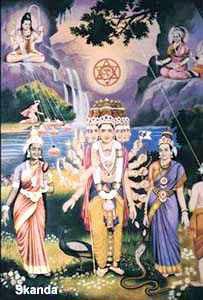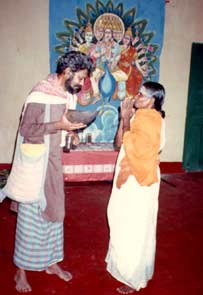|
| ||||||
 Kataragama as a proposed Zone of Peace
Since inception in 1988 the Kataragama Devotees Trust has also been actively promoting the concept of developing Zones of Peace in Sri Lanka, beginning at Kataragama. That is, Kataragama's established identity as a multi-ethnic pilgrimage centre could be consciously leveraged to promote and strengthen ethnic harmony in Kataragama and, indeed, islandwide. What is a Zone of Peace?Any geographical site, from a simple shrine or meditation room to a national park or an entire community, may become a 'Zone of Peace' if there is a consensus among the people who use that site that it should be "a sanctuary free from weapons, intimidation, terrorism, anger, coercion, bullying and abuse of all kinds whether verbal or physical." It is the essence of Kataragama's traditions of mutual respect amid an atmosphere of grace and mercy. Like a plant nursery, a Zone of Peace may be regarded as a sheltered environment where peaceful thoughts and acts may grow strong enough to be carried forth to be transplanted into the surrounding social environment. As nurseries of peace or training grounds for new generations of peaceful, responsible citizens, Zones of Peace could play an important role in helping to revitalize Sri Lanka's traditional culture of peace. Why create a Zone of Peace?Indeed, Zones of Peace have been an important part of Asia's and the world's cultural, spiritual and natural heritage since the earliest human ancestors first recognized the sanctity of the earth everywhere but especially at certain sacred sites. Kataragama is a prominent example in terms of its cultural, religious, mythological and historical importance. Until relatively recent times, there was felt to be little need for Zones of Peace, eco-cultural sanctuaries, or formal codes of acceptable conduct at sacred sites or shrines. However, with the steady intrusion of secular, especially Western, values and with the unbridled growth of commercial activity reaching into every nook and cranny of society including sacred shrines, a consensus is now emerging concerning the need to protect threatened cultural treasures, traditional communities and associated forest habitats as at Kataragama. Each Zone of Peace or Eco-Cultural Sanctuary will incorporate features suited to that particular locality's environment and cultural history. Some features common to all are:
As planners and facilitators, our aim is to tap Sri Lanka's greatest sustainable resource-the cultural heritage of its people -- and to harness it fully to achieve long-term sustainable development for the benefit of generations living and yet to come. For more information about the movement to create Zones of Peace around the world, visit the Zones of Peace International Foundation website or e-mail to: info@zopif.org. |
| Living Heritage Trust ©2021 All Rights Reserved |

